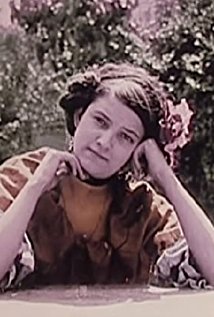Julienne Mathieu (1874-1943): A Pioneer of Silent Cinema

Julienne Mathieu was a prominent French actress during the early days of cinema, remembered for her charm and expressive performances that brought silent films to life. Her career spanned an era when cinema was in its infancy, yet her work helped lay the foundation for the art of storytelling on screen.
Early Life and Career
Although little is known about her personal life, Julienne Mathieu is best remembered for her extensive collaboration with her husband, the Spanish filmmaker and special effects pioneer Segundo de Chomón . Together, they created some of the most visually captivating and imaginative films of their time. Mathieu appeared in several of de Chomón's films, becoming a muse for his groundbreaking cinematic experiments.
She also worked with other notable directors, including Alice Guy-Blaché, widely regarded as one of the first female filmmakers. Mathieu’s natural talent for expression made her a sought-after performer in an era when acting relied entirely on body language and facial expressions to communicate with audiences.
Contribution to Early Cinema
One of Mathieu’s key contributions was her role in films that blended narrative storytelling with fantastical elements, a hallmark of early cinema. She appeared in several short films that showcased her versatility, from comedic roles to performances that required her to interact with innovative special effects.
Some of her notable works include:
- Le roi des aulnes — 1909
- Les têtes fantastiques — 1909
- Cauchemar et doux rêves — 1909
- Le jeu de patience — 1909
- Les cocottes en papier — 1909
- Le Miroir Magique — 1908
- The Secret Suitcase — 1908
- Les incompréhensibles — 1908
- La danseuse microscopique — 1908
- Le voleur mystérieux — 1908
- Les ombres chinoises — 1908
- La belle et la bête — 1908
- L'album magique — 1908
- El hotel eléctrico — 1908
- Le chevalier mystère — 1908
- La légende du fantôme — 1908
- Les dés magiques — 1908
- La grenouille — 1908
- Le rêve de Toula — 1908
- La belle au bois dormant — 1908
- Sculpteur moderne — 1908
- Les glaces merveilleuses — 1907
- En avant la musique — 1907
- L'étang enchanté — 1907
- Les verres enchantés — 1907
- Armures mystérieuses — 1907
- Le spectre rouge — 1907
- Les chrysanthèmes — 1907
- Les oeufs de Pâques — 1907
- La fée des roches noires — 1907
- La poule aux oeufs d'or — 1905
Mathieu’s work reflected the spirit of experimentation that defined the early years of cinema. Her partnership with de Chomón in films featuring fantastical visual effects, such as stop-motion animation and in-camera tricks, showcased her ability to seamlessly integrate her performance with groundbreaking technology.
Legacy
Julienne Mathieu’s contributions to silent cinema are a testament to her artistry and adaptability. At a time when the medium was still finding its voice, she helped shape its emotional and visual language. Her work alongside Segundo de Chomón not only advanced cinematic storytelling but also pushed the boundaries of what was possible in film during the early 20th century.
Today, Mathieu’s films are celebrated as historical treasures, offering a glimpse into the creativity and ingenuity of early filmmakers and performers. Through restorations and modern technologies like colorization, her legacy continues to inspire new audiences and filmmakers.
Final Words
Julienne Mathieu may not be a household name like some of her contemporaries, but her influence on early cinema is undeniable. As an actress, she brought life to pioneering films that blended narrative, fantasy, and technical innovation. Her performances remain a vital part of cinema’s history, reminding us of the artistic and experimental spirit that defined its earliest days.
By revisiting and preserving her work, we honor not only Julienne Mathieu but also the era of bold creativity and exploration she represents.
